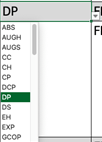Starting an AGS Project
Before starting the import process, please ensure the open Excel workbook is empty. Once the import process begins, all existing sheets will be deleted! Once you have signed in to the Excel Add-in successfully, the following screen will appear:
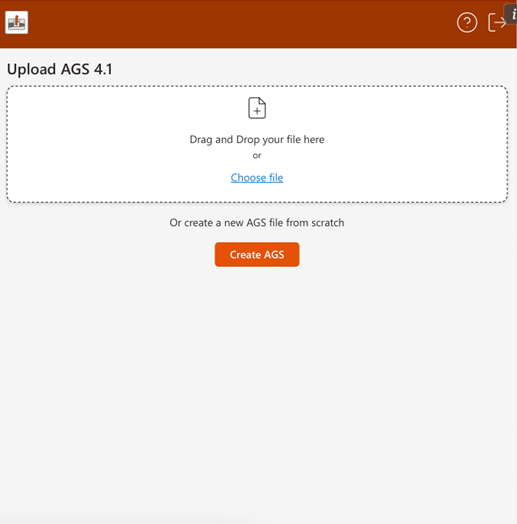
If you have an AGS 4.1 file, Drag and Drop your file or select Choose file to open your system file dialog. Once a file is uploaded, a progress bar will appear while the file is processed and converted to an AGS Excel workbook.
If you want to create an AGS project from scratch, select the “Create AGS” button, which presents the following:

Here, you can select all the AGS 4.1 sheets you want to create in your AGS project. The Disabled sheets “PROJ, ABBR, DICT, TRAN, TYPE, UNIT” are selected by default and are required for RSLog compatibility. A search bar is also at the top to quickly help you find a sheet. You can scroll and select through all AGS sheets as necessary, and once done, select the Add Sheet(s) button to initiate the project.
Home Page
After a successful file import or create AGS from scratch, you will be presented with the home page:
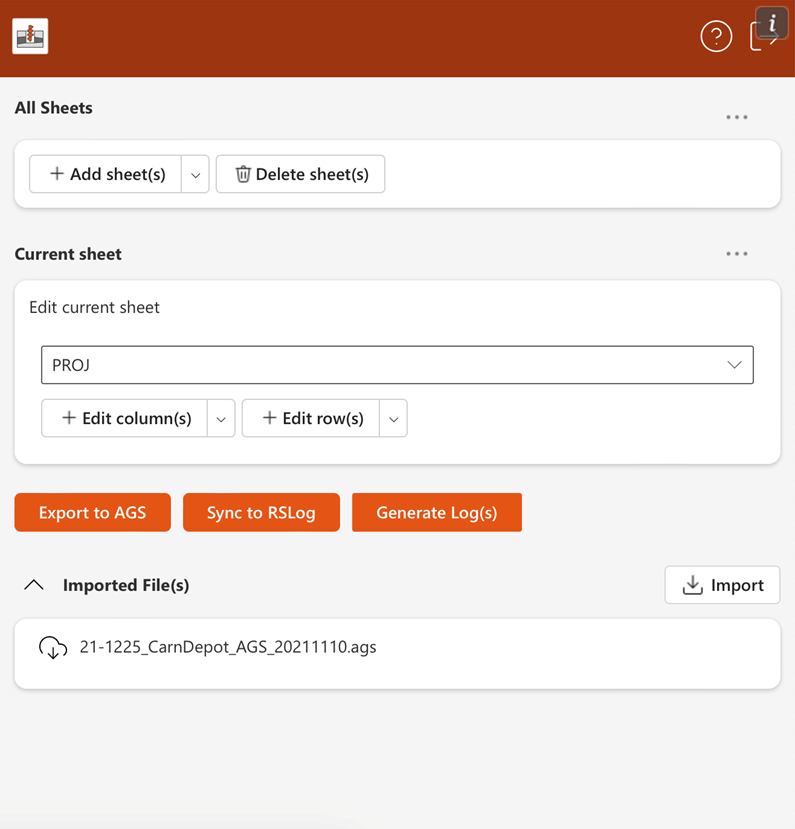
The main Add-in page has the following three sections:
- All Sheets: In this card, you can add either standard or user-defined sheets. Additionally, you can delete sheet(s) as well. Please check their associated sections to check the functionality available for each button. The three dots on the top right of the card reveal a button to Autofit All tables in the AGS worksheets.
- Current Sheet: The current sheet card can search all AGS Groups in the Excel workbook through a dropdown menu. Once an option is selected, the active worksheet in Excel reflects the chosen group. In the edit column(s) split button, you can add a standard, user-defined, or delete a column in the current worksheet. In the edit row(s) split button, you can add or delete rows from the table in the active sheet.
There are three buttons below the Current Sheet card:
- Export to AGS: Once clicked, an AGS 4.1 file will be created based on the Excel workbook, and a system file dialog opens to choose where in your computer directory to save the AGS file.
- Sync to RSLog: Once clicked, the program checks if a project has been created inside of RSLog already. Otherwise, it will create a new one inside of the RSLog Database. Basic Project information and a list of Boreholes from the LOCA group are stored.
A coordinate system is also set for the project based on the LOCA group.
- The default coordinate system is set to Local (X, Y).
- If All boreholes in the LOCA group have values for LOCA_LAT and LOCA_LON, then the coordinate system is set to Geographic
- If All boreholes have values for LOCA_GREF, then the coordinate system is set to Projected with its associated ESPG code
- If LOCA_GREF is not set, but all entries for LOCA_NATE and LOCA_NATN are set, the coordinate system is set as UTM
You will be notified if the coordinate system is unidentified, in which case the default coordinate system is used. Once the data is successfully saved in RSLog, you can open RSLog to interact with the GIS map to look at all available boreholes
- Generate Log(s): The Generate Log(s) page opens once clicked. Check the Borehole Generation Tab in the documentation for more information.
- Imported File(s): This card will display all files that have been imported into this project. On the top right is an import button to attach extra files to the current workbook. Note that the current import feature does not remove duplicate entries!
Editing Data
The AGS Excel Add-in also makes navigating Excel and manipulating AGS data easier.

Above are the first few action buttons: Add Sheet(s) and Delete Sheet(s)
- Add Standard Sheet(s)
- Add User-Defined Sheet(s)
- Delete Sheet(s)
- Add User-Defined Columns
- Add Standard AGS Column(s)
- Delete Column(s)
- Add Row
- Add Multiple rows
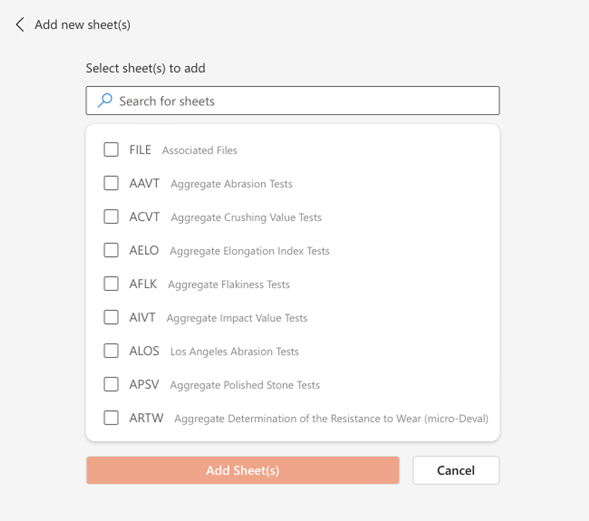
Here, you can select any number of AGS groups that don’t exist in the current workbook in the scrollable card.
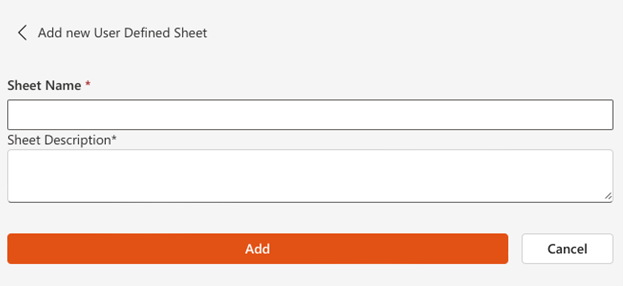
You can specify the Sheet Name and Sheet Description, creating a user-defined group.
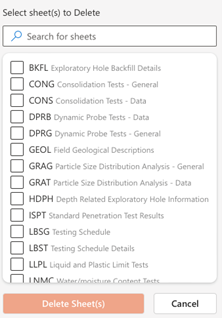
Here, you can delete any sheet that is not mandatory for AGS files. The following section on the home page is the Current Sheet.
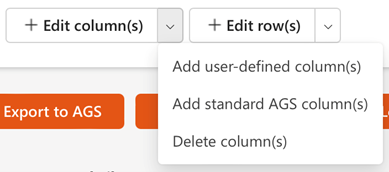
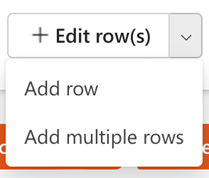
Above are the following manipulation buttons, only enabled inside AGS sheets.
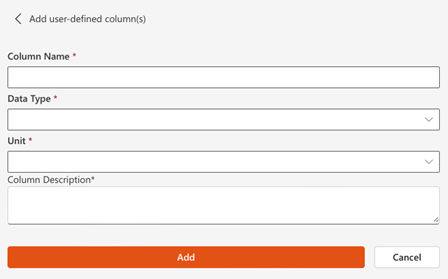
A new user-defined column requires the above information and will create an entry inside the DICT sheet. Data Type and Unit also have associating dropdowns that have an AGS compliant list of possibilities.

Any AGS standard columns that don’t already exist inside of the active sheet appear here.
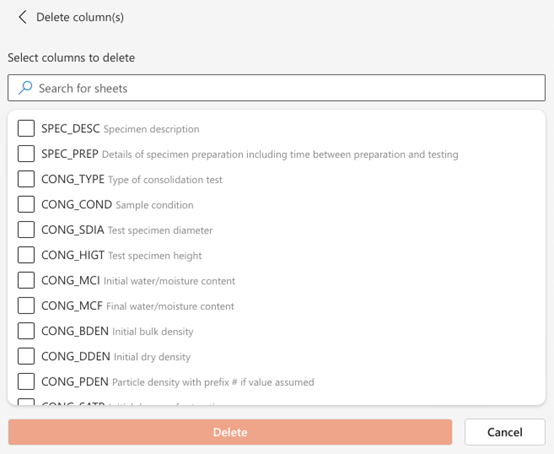
The list of possible columns to delete is populated based on the active Excel sheet.
This button will add a row below the final row in the active table.
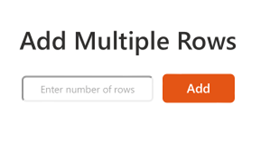
Any number of rows can be added to the active table in the above Modal. Another data manipulation helper is the magic wand, which is present in every standard AGS column.

Clicking the wand opens a pop-up card, providing additional information on a standard column: Data Type, Description, Unit.
Additionally, cells with the data type PA have an associating dropdown with possibly AGS values for that cell:
